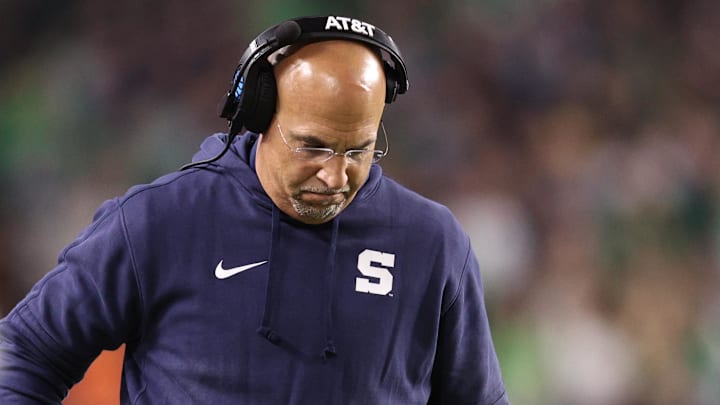James Franklin traditionally does much of his work on the recruiting trail early in the cycle. The foundation of his 2026 recruiting class was laid long before this summer, and much of it is already in place for 2027 with the No. 1 running back in the country, Kemon Spell, as the sturdiest tentpole.
With three commits in the 2027 class, the Nittany Lions currently sit at No. 2 in the country, but to stay in the upper echelon through next year’s signing day will require a few big swings. It seems that Franklin understands that with his newest target, five-star offensive tackle Kennedy Brown, who is the No. 1 player in the country according to 247Sports Composite Rankings.
Oregon, Texas, Penn State, SMU, Texas A&M, Clemson and Georgia are among the contenders pushing for No. 1 2027 recruit OT Kennedy Brown, who has a few game-day visits locked in
— Sam Spiegelman (@samspiegs) July 28, 2025
The latest from Brown: https://t.co/2Owgh0BZ3O pic.twitter.com/CAOYwUEHbF
Penn State could find itself outgunned by deep-pocketed powerhouses in Kennedy Brown’s recruitment
Brown is slated to head to Happy Valley for a gameday visit this fall, which will be Penn State’s best chance to impress the 6-foot-4, Humble, Texas native before official visit season in spring 2026. The gameday environment and culture around Beaver Stadium will be a massive part of Penn State’s pitch because the Nittany Lions won’t be able to compete with the deep pockets of Texas, Texas A&M, Oregon, and others who are after Brown.
The introduction of revenue-sharing theoretically leveled the playing field in the recruiting space, capping every program’s pay-for-play at around $20.5 million for the first year of the House v. NCAA settlement. However, that structure is completely in flux at the moment.
First, the College Sports Commission, the enforcement arm of the settlement, which is in charge of the clearinghouse for outside NIL deals, reached an agreement with lawyers representing the Power Conferences to allow NIL collectives to be treated as any other business by the clearinghouse. That agreement essentially makes the revenue-sharing limit a soft cap instead of a hard ceiling and gives programs like Texas, perennially a top spender of the NIL era, the upper hand in recruitment.
However, that agreement was immediately followed by an executive order from President Trump to outlaw that type of outside NIL payment, though the legal standing of that order is currently dubious.
If the Trump EO becomes the law of the land in college sports, Penn State could offer a similar payment package to a recruit like Brown as Texas, Texas A&M, and even SMU, which has a bevy of rich boosters in the Dallas area. If not, then the Nittany Lions will be outgunned and unlikely to land a commitment from Brown.
In many ways, the fate of Brown’s recruitment to Penn State is out of James Franklin’s hands.
